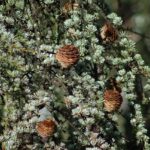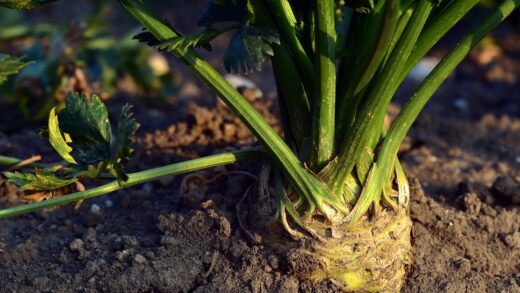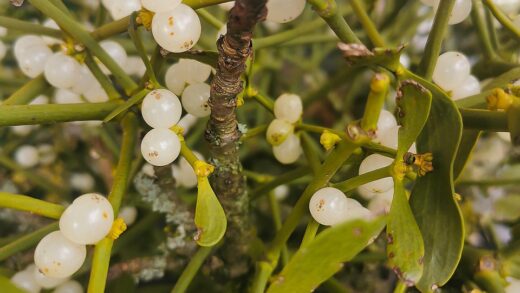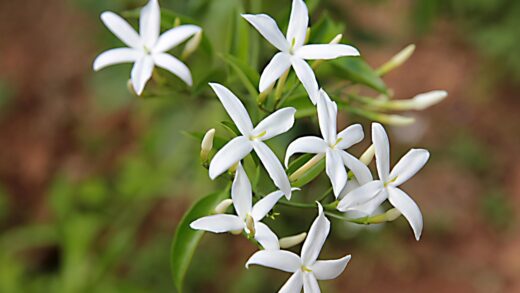Providing the appropriate nutrition is essential for unlocking the full potential of elecampane, allowing it to achieve its impressive stature and produce a profusion of its cheerful, sun-like flowers. While this robust perennial is not considered an exceptionally demanding plant, it thrives when its specific nutritional needs are met. A successful fertilization strategy is not about frequent applications of strong chemicals, but rather about building a foundation of healthy, fertile soil and supplementing it thoughtfully when necessary. Understanding what nutrients elecampane requires, how to interpret the condition of your soil, and when to apply amendments are key to supporting the plant’s vigorous growth from its deep roots to its towering flower heads. This comprehensive guide will explore the essential aspects of feeding elecampane for optimal health and performance.
Elecampane’s primary nutritional needs revolve around the three main macronutrients: nitrogen (N), phosphorus (P), and potassium (K). Nitrogen is crucial for lush, green foliar growth, providing the building blocks for chlorophyll and proteins. Phosphorus plays a vital role in root development, energy transfer, and the formation of flowers and seeds. Potassium is essential for overall plant vigor, disease resistance, and regulating water movement within the plant’s cells. A balance of these three nutrients is necessary, as an excess of one, particularly nitrogen, can lead to weak, leafy growth with poor flowering.
In addition to the main macronutrients, elecampane also requires a range of micronutrients, such as calcium, magnesium, sulfur, iron, and manganese, albeit in much smaller quantities. In a healthy, well-maintained soil that is rich in organic matter, these micronutrients are typically available in sufficient amounts. Deficiencies are rare in garden settings unless the soil pH is extremely high or low, which can “lock up” certain nutrients, making them unavailable for the plant to absorb. Therefore, maintaining a balanced soil pH is a fundamental aspect of ensuring comprehensive plant nutrition.
The most effective and sustainable approach to fertilizing elecampane is to focus on improving the soil itself. Healthy soil, teeming with beneficial microorganisms, is capable of breaking down organic matter and cycling nutrients in a form that plants can readily use. By regularly incorporating organic materials like compost and aged manure, you are not just feeding the plant; you are feeding the entire soil ecosystem. This creates a resilient, self-sustaining system that provides a slow and steady release of all the essential nutrients the plant needs throughout the growing season.
Chemical fertilizers can have a place in a nutrition plan, but they should be used judiciously. They provide a quick-acting source of specific nutrients and can be useful for correcting identified deficiencies or for giving plants in very poor soil a needed boost. However, over-reliance on synthetic fertilizers can lead to a buildup of salts in the soil, harm beneficial soil life, and potentially contribute to water pollution through runoff. An integrated approach, where the primary focus is on organic soil building, supplemented by targeted fertilizer use only when necessary, is the most balanced and effective strategy.
More articles on this topic
The role of soil health
The foundation of any successful plant nutrition program is the health of the soil. For elecampane, a plant that develops a deep and extensive root system, the quality of the soil is paramount. Healthy soil is a complex, living ecosystem, not just an inert medium for anchoring roots. It is composed of mineral particles, organic matter, water, air, and a vast array of living organisms, from bacteria and fungi to earthworms and insects. This vibrant community is responsible for breaking down organic material and converting it into the soluble nutrients that the plant’s roots can absorb.
Organic matter is the cornerstone of soil health and fertility. Materials like compost, leaf mold, and well-rotted manure are invaluable amendments for any soil type. When added to heavy clay soil, organic matter helps to aggregate the fine particles, creating better structure, improving drainage, and increasing aeration. In sandy soil, it acts as a binder and a sponge, increasing the soil’s capacity to retain both water and essential nutrients that would otherwise be quickly leached away. For elecampane, which prefers moist but well-drained conditions, a high level of organic matter creates the ideal physical environment for its roots.
Beyond improving the physical structure, organic matter is the primary food source for the beneficial microorganisms that drive nutrient cycling. These microbes decompose complex organic compounds, releasing essential nutrients like nitrogen, phosphorus, and sulfur in a plant-available form. A soil rich in organic matter supports a diverse and active microbial population, which in turn ensures a continuous and slow release of nutrients throughout the growing season. This is far superior to the boom-and-bust cycle that can be created by the application of synthetic fertilizers.
Maintaining an appropriate soil pH is another critical aspect of soil health that directly impacts nutrient availability. Elecampane prefers a soil pH that is in the slightly acidic to neutral range, typically between 6.0 and 7.5. Within this range, the majority of essential macro- and micronutrients are most readily available for plant uptake. If the soil is too acidic or too alkaline, certain nutrients can become chemically bound to soil particles, making them inaccessible to the plant’s roots, even if they are present in the soil. Regular soil testing can help you monitor the pH and apply amendments like lime (to raise pH) or sulfur (to lower pH) if necessary.
More articles on this topic
Organic fertilization methods
Organic fertilization is the preferred method for providing long-term, sustainable nutrition for elecampane. The cornerstone of this approach is the use of compost, a decomposed organic material that is rich in a wide spectrum of nutrients and beneficial microorganisms. A generous layer of compost should be incorporated into the soil at the time of planting to provide a strong nutritional foundation. Subsequently, an annual top-dressing of compost applied in the spring as new growth emerges is typically all that is needed to maintain soil fertility and meet the plant’s needs for the entire season.
Well-rotted animal manure is another excellent organic fertilizer for elecampane. Manures from herbivores like cows, horses, and chickens are rich in nitrogen and other essential nutrients. It is crucial, however, that the manure is well-aged or “rotted” before use. Fresh manure is too high in ammonia and salts, which can burn the plant’s roots. Composted manure should be worked into the soil in the autumn or early spring, giving it time to integrate with the soil before the plant enters its period of most active growth.
Liquid organic fertilizers can be used to provide a gentle nutritional boost during the growing season, especially for plants grown in containers or in less-than-ideal soil. Feeds made from compost tea, seaweed extract, or fish emulsion can be diluted with water and applied to the soil around the base of the plant every few weeks. These liquid feeds provide a readily available source of nutrients and can be particularly beneficial for helping young plants to establish or for giving a mature plant a boost before it begins to flower.
Green manures, or cover crops, are another powerful organic technique for building soil fertility, although they are more commonly used in larger agricultural settings. This involves planting a specific crop, such as clover or vetch, which is then cut down and tilled into the soil before it sets seed. Leguminous cover crops have the unique ability to “fix” atmospheric nitrogen in the soil through a symbiotic relationship with bacteria on their roots. This process naturally enriches the soil with nitrogen, improving its fertility for the subsequent crop or planting of perennials like elecampane.
Synthetic fertilizer application
While an organic-first approach is recommended, there may be situations where the use of a synthetic fertilizer is warranted for elecampane. This is most often the case when a soil test reveals a specific nutrient deficiency or when plants are growing in very poor, depleted soil that cannot be quickly improved with organic matter alone. In these instances, a balanced, all-purpose granular fertilizer can provide a targeted and efficient way to supply the necessary nutrients. A formulation with a balanced N-P-K ratio, such as 10-10-10, is generally a suitable choice.
The timing of synthetic fertilizer application is critical to ensure it is used effectively by the plant and to minimize waste. The best time to apply a granular fertilizer is in the early spring, just as the new growth is beginning to emerge. This timing coincides with the plant’s natural growth cycle, ensuring the nutrients are available when the demand is highest. A single application in the spring is usually sufficient for the entire year. Avoid fertilizing in late summer or autumn, as this can stimulate new, tender growth that may be damaged by the first frosts.
When using any synthetic fertilizer, it is imperative to follow the application rates recommended by the manufacturer. The temptation to add a little extra in the belief that “more is better” can be very damaging. Over-fertilizing can lead to a buildup of mineral salts in the soil, which can burn the plant’s roots and interfere with water uptake. An excess of nitrogen, in particular, will often result in lush, weak foliage that is more susceptible to pests and diseases, all at the expense of a strong root system and abundant flowers.
The method of application is also important. Granular fertilizers should be sprinkled evenly on the soil surface around the base of the plant, extending out to the dripline (the edge of the foliage). Avoid letting the granules come into direct contact with the plant’s stem or leaves. After applying the fertilizer, gently scratch it into the top inch of soil and then water the area thoroughly. Watering is essential as it helps to dissolve the granules and carry the nutrients down into the root zone where the plant can access them.
Recognizing nutrient deficiencies
Observing your elecampane’s foliage is one of the most direct ways to assess its nutritional health. The leaves can provide clear visual cues if the plant is lacking a specific essential nutrient. The most common deficiency symptom is chlorosis, which is a general yellowing of the leaves. When the older, lower leaves turn yellow first while the new growth remains green, it typically points to a deficiency in a mobile nutrient like nitrogen. The plant is moving the scarce nitrogen from the old leaves to support the development of the new ones.
If the yellowing appears first on the new, upper leaves, it is more likely to be a deficiency in an immobile nutrient, such as iron or manganese. These nutrients cannot be easily moved by the plant from older tissues to new ones. Iron chlorosis is characterized by the new leaves turning yellow while the veins remain dark green, creating a distinctive netted pattern. This condition is often caused not by a lack of iron in the soil, but by a high soil pH that makes the existing iron unavailable to the plant.
Other nutrient deficiencies can produce different symptoms. A phosphorus deficiency, for example, can sometimes cause the foliage to take on a purplish or reddish tinge, and it may also result in stunted growth and delayed flowering. A lack of potassium can lead to yellowing or browning along the edges or tips of the older leaves, while the center of the leaf remains green. While these specific symptoms can be difficult to diagnose definitively without a soil test, they are valuable indicators that the plant’s nutritional needs are not being fully met.
When you observe potential signs of a nutrient deficiency, the first step should be to check the soil’s pH and moisture levels, as these factors can often mimic or cause nutrient problems. If the pH is balanced and the soil is appropriately moist, then a deficiency is more likely. A soil test from a local extension service can provide a precise diagnosis. Based on the results, you can then apply the specific nutrient that is lacking, either through an organic amendment or a targeted synthetic fertilizer, to correct the problem and restore your elecampane to optimal health.


















